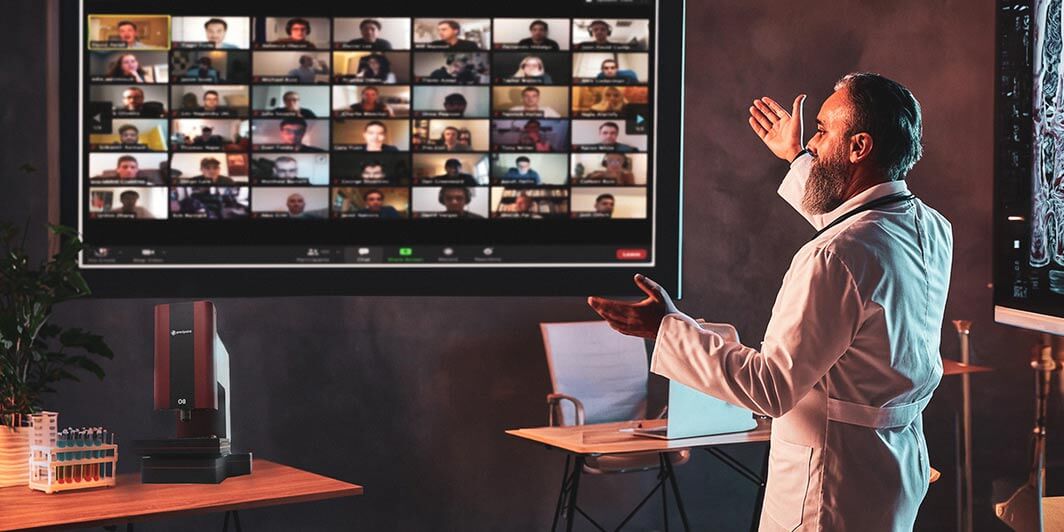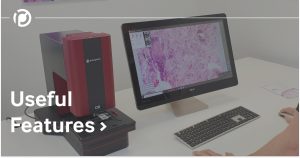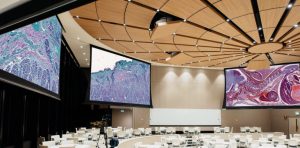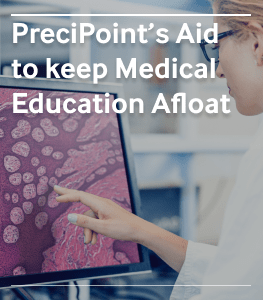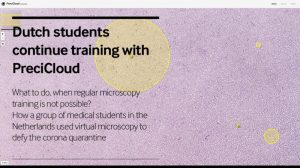Synopsis
It is essential to adopt flexible learning methodologies to create a comprehensive and accessible learning environment. Virtual microscopy provides many opportunities to implement flexible learning strategies. It greatly benefits from innovative learning methods with its ability to harness new approaches to education. The benefits are many – from repeating experiments and feedback to personalizing learning experiences, anything is possible. The result is a deeper understanding of the entire process, work sample and greater commitment. Although flexible learning is a very popular approach to modern learning practices, it also poses some challenges. Students may face obstacles such as limited physical interaction with samples or unreliable internet connection. However, technological advancement provides appropriate solutions to address these problems. This article will explore the important features of flexible learning, as well as the challenges faced by virtual microscopy laboratories and their possible solutions. Let’s take a look at why flexible learning is so important for today’s learning environment.
Flexible Learning in Education
In recent years, technology has significantly transformed the learning process, moving from traditional learning methods to innovative, more flexible, and interactive methods. The virtual microscope in science education has become a prominent beneficiary of these approaches. Virtual microscopy presents opportunities by allowing students to delve deeper into the study of microorganisms from the comfort of their homes.
Surpassing All Barriers
Adopting flexible learning only offers many advantages and meets the specific needs of students. First, it allows students to access the slide from anywhere, eliminating geographic barriers. This flexibility encourages inclusion and allows students who may lack access to physical laboratories to engage in hands-on learning. In this sense, part-time students also prefer flexible learning because most of the subjects can be integrated into e-learning materials.
Education in Loop
Additionally, virtual microscopy allows students to repeat experiments and observations as many times as necessary compared to traditional laboratories where resources are limited. The virtual environment provides an unlimited number of samples, ensuring that students practice and hone their skills at their own pace.
Personalized Education
Furthermore, virtual microscopy offers the advantage of personalizing the learning experience. Virtual microscopy labs often feature interactive modules, tests, and simulations to suit individual learning styles and preferences. Students can tailor their exploration of microscopic structures to their needs, leading to deeper understanding and greater engagement.
Challenges and Solutions
Virtual microscopy presents many challenges. One challenge is the lack of physical interaction with the samples. In microscopy, the development of tactile skills is vital, and the absence of hands-on manipulation can hinder students’ ability to understand certain concepts. However, this challenge can be overcome by integrating augmented reality (AR) and haptic feedback technology into vital microscopy platforms. This approach can simulate the feeling of physically handling specimens, thus enhancing the learning experience.
Basic Requirement
Some students may not have access to high-speed internet and appropriate devices to fully reap the benefits of virtual laboratories. Therefore, educational institutions must prioritize closing the digital divide to ensure equitable access to flexible learning tools.
Continuous Guidance
The presence of teacher support and guidance is important in any learning environment. In traditional laboratory settings, instructors can provide immediate feedback and assistance to students. To address this gap, virtual labs should integrate features such as live chat, discussion forums, and video conferencing tools, facilitating real-time interactions between students and teachers.
The Impact of Flexible Learning on Science Education
Flexible learning is a technology-based approach that boosts curiosity, critical thinking, and problem-solving skills. All these skills are essential for scientific research. Virtual microscopy labs can accommodate more students at the same time, reducing time conflicts and allowing more students to actively participate. This scalability improves access to hands-on science education, which is especially beneficial for students in remote areas doing distance learning. Some solutions are screen-based microscopy. It allows for shared visualization and task-oriented conversations, which provides significant educational benefits and improves the quality of learning.
An Opportunity for Collaborative Learning
Virtual microscopy opens possibilities for collaborative learning. Students can participate in group discussions, share results, and collaborate on projects regardless of their location. This collaborative approach strengthens teamwork and communication skills, preparing students for the collaborative nature of scientific research and careers.
Shared Access to Digital Slides
Virtual Microscope provides learners and educators with a wide range of digital slides, allowing them to participate in collaborative discussions and exchange valuable ideas and experiences.
Real-time Communication
Virtual Microscope provides real-time communication channels between learners. It also promotes the development of critical thinking as students can actively participate in group discussions, exchange ideas, ask questions, etc.
Peer Learning
Collaborative learning promotes peer learning and students can better guide their peers. In this way, a supportive learning environment is created.
Collaborative Problem Solving
Features such as annotation tools and highlighting and drawing capabilities help students collaborate on case studies or highlight specific features on digital slides. By collaborating, students can improve their diagnostic skills and deepen their understanding of pathology.
Project-based Learning
Collaborative learning is seamlessly integrated with the project-based learning approach. Students work in small groups to explore complex cases, conduct research, or give presentations. This approach promotes effective teamwork and encourages the distribution of responsibilities and practical application of knowledge in the real world.
Global Collaboration
Geographic distance is not an obstacle for the virtual microscopy platform. It removes barriers and enables learners from different institutions and even different countries to collaborate seamlessly. This provides opportunities for international collaboration, exchange programs, and the exchange of different medical perspectives and practices.
Conclusion
In a virtual microscopy laboratory, flexible learning can help learners in many ways, leading to deeper understanding and better results. Students enjoy many advantages and become more competent and better prepared for future work or research assignments. For example, in flexible learning, geographic distance is no longer an issue because students are connected wherever they are. In a virtual environment, an unlimited number of samples allows learners to customize the learning experience according to their individual needs. In addition, a series of modules, tests and simulations help personalize the learning process and promote better results. While flexible learning undoubtedly has great potential for both virtual microscopy laboratories and learners, the challenges that may arise must be acknowledged and addressed. There are certainly ways to overcome these obstacles. Flexible learning provides tremendous opportunities for collaborative learning, redefining the meaning of teamwork and preparing students to diagnose and investigate the nature of collaboration. By investing in state-of-the-art equipment like PreciPoint’s M8, O8, or iO:M8 and Fritz, or leveraging a platform like PreciCloud, you can create a winning combination that benefits your students and your virtual microscopy lab.

